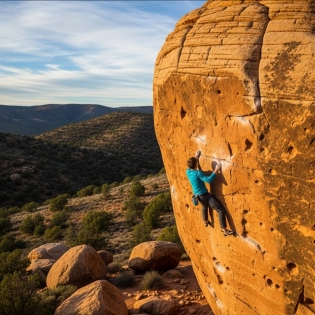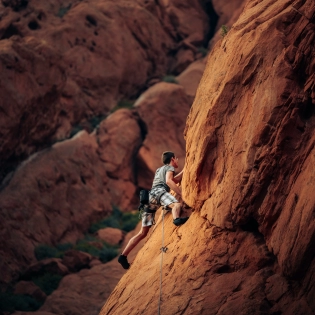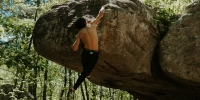

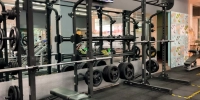
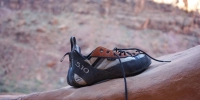




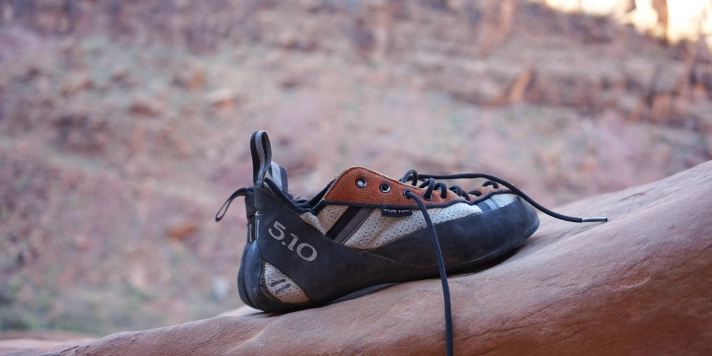
climbing shoes
Yes, leather climbing shoes stretch and can even become quite baggy if you choose the wrong size and they stretch a lot. Synthetic shoes barely stretch, and even if they do, its so minimal that most don't even notice a difference.
Loose shoes are great for warm-up routes, but generally bad for hard routes. Tight shoes are great for hard routes, and can be used for warm-up routes, but if you have looser ones, you may prefer them for the warm-ups over the tight shoes.
Not really. They maybe uncomfortable and borderline painful, but you shouldn't actually feel any pain.
If you have blisters or you aren't used to climbing shoes, that could change the situation. Until your blisters go away or until you get used to your shoes, you could feel some pain.
For warming up on the wall, many climbers like wearing slightly looser shoes. This is to give their feet time to also warm up, but also to not have to warm up with the pressure from the tighter climbing shoes.
If you are climbing hard routes or projects, you will most likely benefit from tighter shoes that have little to no dead space in them.
If you are a beginner climber, it won't make much of a difference, and you should probably stick to slightly looser shoes. Tighter climbing shoes can provide extra performance advantages for climbers climbing difficult routes. If you are not climbing difficult routes, and you are a beginner, you most likely will not even notice these performance gains from the shoes, as the routes you are climbing do not even utilize their benefits.
Yes, your toes should be slightly curled in climbing shoes.
Having curled toes allows you to exert more force from your toes. This is especially helpful when you have to stand on small edges, or to even jump from them to another hold.
Though they should be curled, your toes should not be in pain. If your toes or feet are in pain, the shoes may be too small for you, or the shoes may not be the right shape for your feet.
Climbing shoes, after their break in period, should not be painful to walk in, but they can be uncomfortable, tight, and snug.
During a pair of climbing shoes break in period, they may be slightly painful, but should not cause too much pain. After their break in period, they should have stretched enough to not be painful, while still remaining tight and snug.
If you have been climbing in your shoes for a few sessions, or a few months, and they are still painful, you may have just not bought the right shoes for your feet, or they may just be too small.
Usually the break in period can be around 5 sessions, for some it may be more, but after a month or two or regular climbing, they should be broken in.
Climbing shoes should be snug and tight, but not too small. What that means is that there should be as little dead space in the shoes as possible, ideally, none.
Climbing shoes are designed to be snug and tight, and to not have dead space within them. But, climbing shoes come in all shapes and sizes, and not all shoes will fit every climber. This is why it is important to try on different shoes and different sizes in order to find the right pair of shoes for the shape of your feet. The right pair meaning shoes that are snug, have no dead space within them, and fit the shape of your feet also in terms of the toe box and how wide it is.
Whether climbing shoes should be bigger or smaller depends on what you are comparing them to. I personally wear half a size larger than my street shoe size in all my climbing shoes. I have a very difficult time finding shoes that fit properly, especially in the heel area, and I find that going up half a size is even a semi performance fit, as going down is just unbearable.
So you can go down in sizes or even up, as long as the shoe fits the shape of your feet, is snug, tight, and has little to no dead space, and most importantly, is not too small.
If it helps, I wrote an article on this very subject on this site's blog, it goes over all the steps for choosing the right climbing shoes for your feet: Climbing Shoes 101: How To Pick The Right Pair For You



